

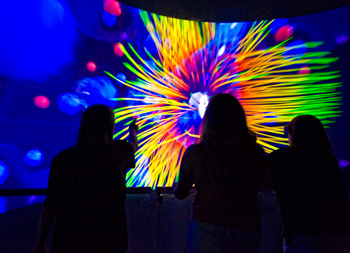
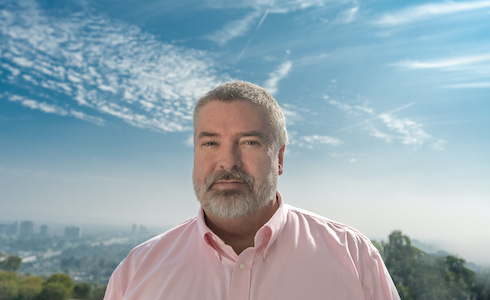
Abstract
Glenn Phillips will discuss the recent exhibition of Grandfather: A Pioneer Like Us which was a meticulous reconstruction of Harald Szeemann’s 1974 exhibition, originally presented in his apartment in Bern, Switzerland. The exhibition included more than 1,000 objects from his grandfather, Étienne Szeemann, an inventive maître coiffeur who was trained in Paris, Vienna, and London, and who developed an early version of the permanent wave machine. Most of these objects were later distributed, unidentified, throughout Szeemann’s massive archive in Maggia, Switzerland. Focusing on the interface between digital and analog procedures necessary to produce more than 100 surrogate objects for the exhibition, Phillips will discuss the seven-year process of reconstructing the Grandfather exhibition.
Bio
Glenn Phillips is Curator and Head of Modern and Contemporary Collections at the Getty Research Institute in Los Angeles. Phillips was a member of the core organizational team for Pacific Standard Time: Art in L.A. 1945-1980, a series of over sixty concurrent exhibitions that were held across Southern California from fall 2011 to spring 2012. His other curatorial projects include Artists and Their Books (2018); Yvonne Rainer: Dances and Films (2014); and California Video (2008). In 2018 he presented with co-curator Philipp Kaiser Harald Szeemann: Museum of Obsessions, a retrospective of Szeemann at the Getty Research Institute that traveled to the Kunsthalle Bern, Kunsthalle Dusseldorf, and Castello di Rivoli Museo d’Arte Contemporanea. A reconstruction of Szeemann’s 1974 exhibition Grandfather: A Pioneer Like Us was presented at the ICA, Los Angeles; 74 Gerechgtigkeitsgasse, Bern; Kunsthalle Dusseldorf; Castello di Rivoli Museo d’Arte Contemporanea; and Swiss Institute, New York.
blogs.getty.edu/iris/author/gphillips
For more information about the MAT Seminar Series, go to: seminar.mat.ucsb.edu.
Speaker: Charlie Roberts.
Time: Monday, November 25th, 1pm.
Location: Elings Hall, room 1601.
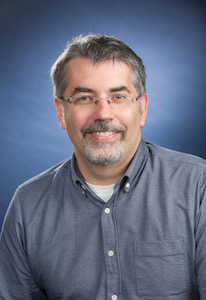
Abstract
Demoscene aesthetics are often driven by exploring the limits of computational hardware and programming techniques*. In contrast, aesthetics in live coding performance are often driven by abstraction and expressive potential. Although the two communities have largely existed at a distance, in recent years organizers have created more events where they converge**. In this talk I will provide an overview of both communities and discuss research combining the graphical techniques of the demoscene—in particular ray marching and constructive solid geometry—with the abstractions required for live coding performance. I conduct this research via a browser-based environment for exploring and performing with ray marchers, marching.js (https://charlieroberts.github.io/marching/playground/).
* often but not always… gotta love overhead projector demos: https://www.youtube.com/watch?time_continue=2&v=LCIsIfEOEI8&feature=emb_logo
** as two examples from 2019 see http://atparty-demoscene.net/2019/05/09/party-2019-performers/ and https://2019.cookie.paris
Bio
I am an Assistant Professor of Computer Science at Worcester Polytechnic Institute, with an affiliation in the Interactive Media & Game Development program, where my research examines human-centered computing in digital arts practice. I design and develop a creative coding environment for the browser, Gibber, that I use both for educational research and audiovisual performances. Gibber is used to teach computational media to students of all ages, and I perform with it regularly at international conferences and dance club events across the US, Europe, and Asia.
For more information about the MAT Seminar Series, go to: seminar.mat.ucsb.edu.
Speaker: Sean Follmer.
Time: Monday, November 18th, 1pm.
Location: Elings Hall, room 1601.
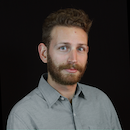
Abstract
Towards a goal of more human-centered computing, I believe that interaction must be grounded in the physical world and leverage our innate abilities for spatial cognition and dexterous manipulation with our hands. By creating interfaces that allow for richer physical interaction, such as bimanual, whole hand haptic exploration, these systems can help people with different abilities (e.g., children, people with visual impairments, or even expert designers) better understand and interact with information. My work in Human Computer Interaction (HCI) addresses a central challenge in the widespread adoption of such tangible user interfaces – how can we create physical interactive displays that update dynamically, and what are the interaction techniques and enabling technologies necessary to support such systems? This talk will focus on recent work exploring those questions through the development of new 3D tactile displays for interacting with spatial information in Virtual Reality, interfaces for people with visual impairments to author 3D models, and enabling technologies (including electrostatic adhesion) to make these devices low cost and high resolution.
Bio
Sean Follmer is an Assistant Professor of Mechanical Engineering and Computer Science (by courtesy) at Stanford University. His Research in Human Computer Interaction, Haptics, and Human Robot Interaction explores the design of novel tactile physical interfaces and robotic devices. Dr. Follmer directs the Stanford Shape Lab and is a faculty member of the Stanford HCI Group. Dr. Follmer received a PhD and a Masters from the MIT Media Lab in 2015 and 2011 (respectively) for his work in human-computer interaction, and a BS in Engineering from Stanford University. His talk featured on TED.com was named one of the best science and tech TED talks of 2015 and has been viewed more than 1.5 million times. He has received numerous awards for his research and design work including 5 Best Paper Awards and 7 Honorable Mentions from premier conferences in human-computer interaction (ACM UIST and CHI), Fast Company Innovation By Design Awards, a Red Dot Design Award, and a Laval Virtual Award. His work has been shown at the Smithsonian Cooper Hewitt Design Museum, Ars Electronica Center, and the Milan Design Week.
For more information about the MAT Seminar Series, go to: seminar.mat.ucsb.edu.
Speaker: Sarah Rosalena Brady.
Time: Monday, November 4th, 2019 at 1pm.
Location: Elings Hall, room 1601.
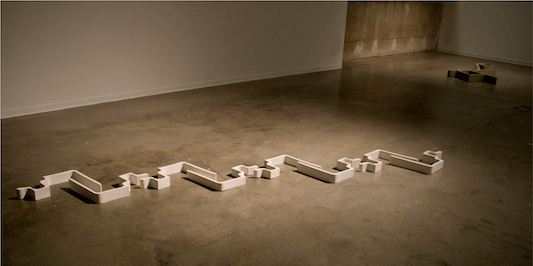
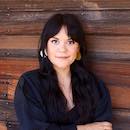
Abstract
Sarah Rosalena Brady discusses her research on computational craft in ways that speak to unstable states and binaries between life/nonlife, human/posthuman, ancient/modern, and biological/technological to reauthorize power in materialism. She will be discussing her recent research with the National Museum of the American Indian and Jet Propulsion Laboratory.
Bio
Sarah Rosalena Brady is an interdisciplinary artist and new professor at UC Santa Barbara in Computational Craft and Haptic Media. Her work creates hybrids between binaries and power structures as a multiracial First Nations and Latinx. She is interested in utilizing materials in ways that speak to unstable states and speculate new futures where power is distributed. Her material processes employ machine learning, digital fabrication, ceramics, robotics, creative code, and weaving. She was recently given the LACMA Art + Tech Lab Grant, Steve Wilson Award from Leonardo, International Society for Art, Science, and Technology, and the Smithsonian Artist Research Fellowship Nomination with the National Museum of the American Indian.
For more information about the MAT Seminar Series, go to: seminar.mat.ucsb.edu.
Speakers: Maja Kuzmanovic, Nick Gaffney.
Time: Monday, October 7, 2019 at 1pm.
Location: Elings Hall, room 1601.
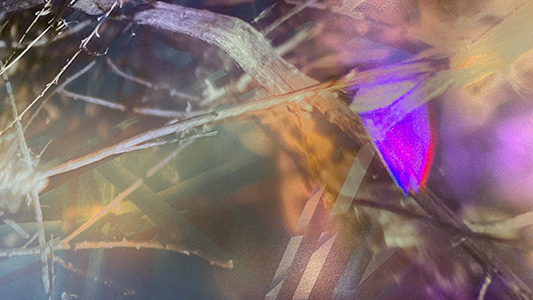
Abstract
FoAM is a network for speculative culture at the intersection of art, science, nature and everyday life. FoAM's co-founders Maja Kuzmanovic and Nik Gaffney discuss their interstitial techniques for living with uncertainty, combining experiential futures, generative technologies, labcraft, and the ephemeral tools of panpsychism.
As strategies of resistance against dystopian fear, FoAM experiments with futurecrafting and conviviality to re-enchant the present. We explore, among other things, animist approaches to interdependence, attunement and reciprocity, using a wide spectrum of transdisciplinary techniques — from mythological to ecological. When attuning to arcane forces of change — such as globalization, the atmosphere, interpersonal dynamics, or gut flora — FoAM's work combines pre-modern crafts of magic and ritual with Futures and technological arts. We evoke and invoke ways of viewing, being and acting in a world where the continuation of humanity is no longer certain. Dark arts for dark times, capable of transforming "the darkness of the tomb into the darkness of the womb". These techniques for re-animating fertile darkness inevitably begin with care. A careful and care full engagement with the world. Care as an antidote to nihilism, apathy or indifference. Care as the potion anima takes to remember itself as inseparable from animate matter.
FoAM is a network of transdisciplinary labs at the intersection of art, science, nature and everyday life. Guided by our motto "grow your own worlds" we cultivate an ecology of practices to re-imagine possible futures, create concrete situations in the present, encourage learning, incite discussions, and suggest alternatives.
Originally founded in Brussels in 2000, the FoAM network currently includes a range of organisational forms, each adapted to the local conditions. As with foam (the mass of bubbles), FoAM (the group) is a dynamic entity able to change shape and scale as required. We can appear as a business in the morning, a tightly knit family at lunchtime, a research facility in the afternoon, a loose bunch of philosophers in the evening or a dedicated designers collective by night. The lives and livelihoods of our members is as much part of FoAM's work as conducting a research project or organising events. We must therefore be malleable enough to accommodate changing needs and a range of lifestyles.
The FoAM studios are places designed to encourage open exchanges of ideas, techniques and experiences, hybrids between laboratories, ateliers and living rooms. We are organised as a distributed network concentrated in Europe and Australasia, with nodes (people, projects and partner organisations) spread across the thin habitable surface of the planet. Our distributed structure enables our studios to remain small and flexible; able to incubate experimental initiatives while the wider network can develop activities with broader scope.
FoAM's activities are as wide-ranging as the people involved. We conduct fieldwork, create artworlds, design and host participatory experiences as embodied responses to our research questions, aiming to engage all senses and encourage different perspectives. In the spirit of an open source culture, we publish our work and tend to a collaborative wiki. In our public events we aim to foster a sense of agency by inspiring and enabling participatory learning and co-creation. FoAM's unique approach to technological and performing arts, futurecrafting, science, education, experience design and process facilitation helps us to engage with people from all walks of life.
We share regular updates from the FoAM network through our blog, newsletter, flickr and twitter stream.
For more information about the MAT Seminar Series, go to: seminar.mat.ucsb.edu.
Date: Thursday, September 19th, 2019
Time: 2pm
Location: Room 3001, Elings Hall
Abstract
Performance studies scholars have had many debates over the definition of "liveness" in digitally-mediated performances. Many scholars have characterized liveness as a unique fundamental quality of performances that has distinguished performing arts from different art forms influenced by mediation and mediatization. Some have argued about the necessity of having a new ontology for liveness, based on the new configuration of the body and its extension through technology.
Is Any-Body There? (Re)envisioning Liveness through Digital Performance (Re)visit is a practice-based dissertation, which probes the new meanings and manifestations of liveness in our emerging cultural context highly influenced by the advent of digital technologies. It is the first research study to consider creating "digital performance revisits" as a research methodology in performance/media arts and studies. To this end, I have developed and exhibited three interactive multimedia performances, inspired by three historical performance art masterpieces, which I have referred to as "revisiting performances". Each artwork through its specific interaction design and application of ‘techno-actors’ (digitally mediated or synthesized performing bodies) has problematized and provoked questions about the notions of techno-liveness and tele-presence on stage. This research methodology has enabled a meaningful analytical comparison between my three performative experiments and the former artworks in order to explore these concepts in the contexts of digitally-mediated interactions with "techno-bodies" (the artificial bodies of techno-actors), as opposed to unmediated interactions with the live performers’ corporeal bodies on stage.
Considering these performance scenarios as "Theatrical Turing Tests", the performance participants are considered as human evaluators who interact with various types of videated, tele-present, and robotic bodies and determine whether they can recognize the live presence of a human (or its believable simulation) on the other side of the digital medium or not. By using digital media/performance theory and praxis, this research analytically and practically examines the potential of digital technology as a medium for the transmission and synthesis of live presence and affect.
Date: Friday, August 16th, 2019
Time: 1pm
Location: Room 2611 (DataViz Lab), Elings Hall
This dissertation is the study of a series of media art installations that deal with embodied technology which allows humans to interact with computers in different contexts. It explores the social effects of ubiquitous technology and the role for embodied media arts as a critique of interactive digital technologies which are replacing physically present forms of communication with our environment and with each other. In these works I examine the affordances of different physical spaces. Intimate spaces allow for the ability to touch and to hold. Social spaces allow for the ability to interact inter-personally. Environmental spaces allow for movement and interaction with large amounts of information. To examine these systems, I am using affective computing (computational expression of emotion) and tangible computing (objects with computational power).
"A particular method of symbolizing may be unimportant, but it is always important that this is a possible method of symbolizing. And this happens as a rule in philosophy: The single thing proves over and over again to be unimportant, but the possibility of every single thing reveals something about the nature of the world." - Ludwig Wittgenstein, Tractatus Logico-Philosophicus, 3.34.
3.34 embodies the tension between explicit calculation and unforeseen emergence. The configuration of the suspended agents in the robotic sculpture is dictated by a continuous, self-organizing algorithm, in which each agent's position is influenced by a subset of other agents in the system.
Despite the limited intelligence of each agent, an intricate and dynamic structure emerges from the movement of the entire system. The structure, not explicitly calculated as a whole, is the result of many small and somewhat blind decisions on the part of each agent--decisions that render the system with a kind of meta-logic that is observable only from a greater distance.
This tension between explicit control and emergent form invites a meditation on the relationship between logical calculation and unexpected consequences at each scale of existence. To what extent are we the suspended agents, blind to the auxiliary effects of decisions in our own lives? And to what extent can we find a way to appreciate the larger structures we create?
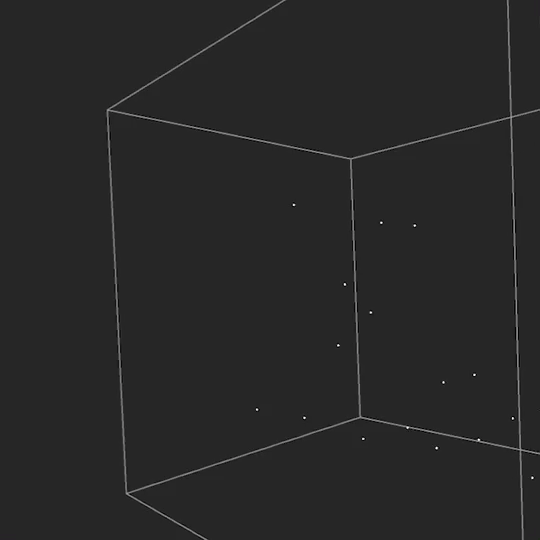
software simulation
Date: Tuesday, June 11th, 2019.
Time: 11am
Location: Experimental Visualization Lab, room 2611, Elings Hall.
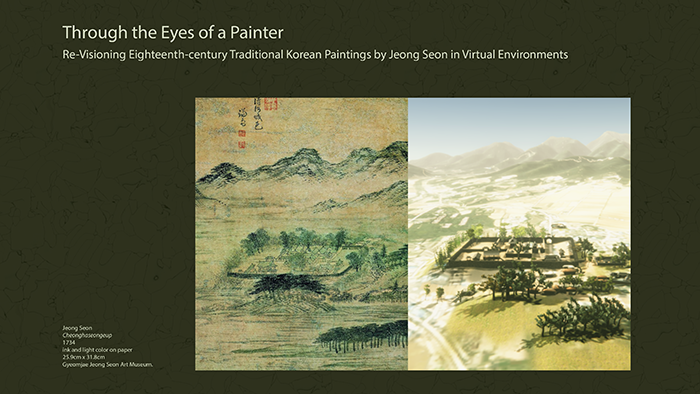
Abstract:
Jeong Seon (1676–1759), was one of the most innovative painters in Korean history. More than 300 of his paintings and a great deal of material written about him has enabled Korean art historians to study his work carefully in the past 20 years. Unlike the conventional art style of the early Joseon period (ca. 1392–1592), his attempts to directly observe nature and capture it in his paintings spawned the so-called "true-view" art movement (jingyeong) that dominated in the late Joseon period (ca. 1700–1850). Despite its name, Jeong’s style was not only the result of realistic observation but also a considerable shift away from traditional painting subjects, such as Mt. Wuyi, the center of Taoism and Buddhism. His appointment as the mayor of Cheongha in North Gyeongsang province in 1753 gave him opportunities to explore the famous scenic areas around the town. These paintings were collected in the Album of Gyeongsang Province (yeongnamchup).
Jeong’s methods for simulating Korean landscapes have been the subject of much debate, but most of the discussion surrounding his work has been focused on the literature around him. For this reason, Jeong’s unique perspective style has yet to be clearly defined. Thus, after reading Kay Black’s exceptional paper on how to scientifically describe paint styles, I decided to define the true-view style.
This research presents clear answers about Jeong’s extraordinary perspective skill based on computer graphical analysis. Jeong’s paintings in Album of Gyeongsang Province were virtually reconstructed based on photographs and geographic data of the locations. The true-view landscape painting style utilized multiple distances, hemispheric distortion effect, morphological transitions, and constructing a linear narrative in painting. This dissertation explains how Jeong represented natural scenery using these techniques in his paintings. Finally, this research furthered the goal of our program to build bridges between art and science.
Date: Monday, June 10th, 2019
Time: 11am
Location: MAT conference room (2003), Elings Hall

Abstract:
With a digitally implemented generative system for artistic purposes, controlling a non-trivial number of parameters is one of the biggest difficulties in the process of temporal composition with the system. This research proposes an interface for manual temporal control on parameters of generative audio-visual system. The proposed interface operates in ‘state space’ formed by a simplex shape of arbitrary dimension with the barycentric coordinate to define the locations inside. The state space is a connection between the generative system and the manual control and makes an abstraction of system state for the artist to easily perform the manual design of temporal structure.
Date: Wednesday June 5, 2019.
Time: 11am
Location: Elings Hall room 2611, Experimental Visualization Lab.
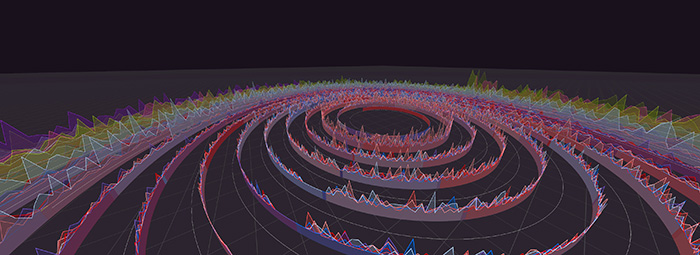
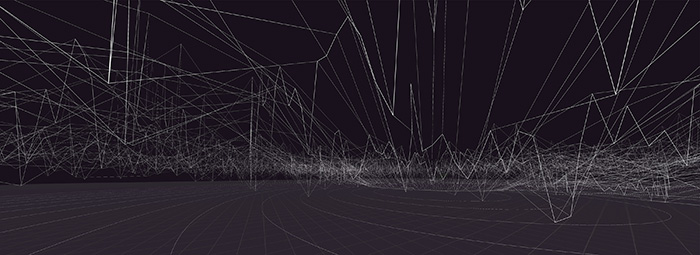
Abstract:
Visualizing time-oriented data has been essential to revealing patterns and trends in the data long before the creation of computers. With the development of technology, the visualization of time-oriented data has been evolved from static two-dimensional line charts to dynamic visualizations with well-designed user interfaces for data exploration. Meanwhile, virtual reality, with the improvement in human experience it brings, has become a visualization platform that is worth inquiring. As an exploration of visualizing information in a virtual reality environment, this project tried to combine visual complexity with a convenient and manageable information presentation system. The data used in this project are daily check-out data retrieved from the Seattle Public Library, and the local news data on corresponding dates from the Seattle Times. The prototype of this project was developed in Processing, whereas the visualization for the virtual reality was built in Unity for the Oculus Rift headset and the Oculus Touch controllers.
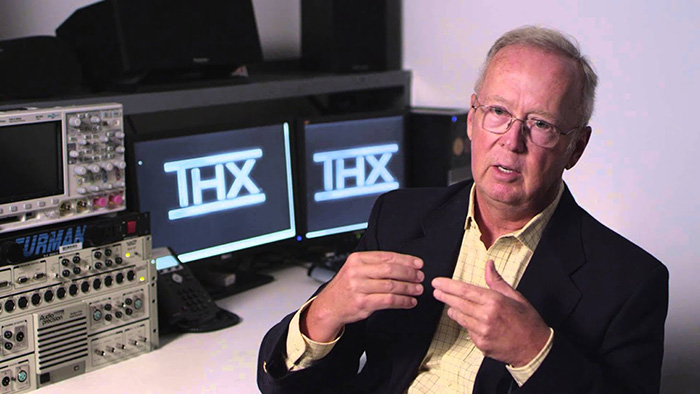
Dr. Moorer will present an informal sneak preview of his latest musical work-in-progress. This new work-in-progress, based on spoken voice, will have its official première in Fall 2019 at CCRMA, Stanford.
James "Andy" Moorer is one of the pioneers of computer music. With bachelors degrees in applied mathematics and in computer science from MIT, he received his PhD in computer science from Stanford University in 1975. Together with John Chowning, Andy Moorer was codirector and cofounder of Stanford's Center for Computer Research in Music and Acoustics (CCRMA) in the 1970s.
Between 1977 and 1979, he was a scientific advisor to IRCAM in Paris. Between 1980 and 1987, while vice-president of research and development at Lucasfilm's The Droid Works, he designed the Audio Signal Processor (ASP) which was used in the production of sound tracks for Return of the Jedi, Indiana Jones and the Temple of Doom, and others, including the well-known company THX, and its Deep Note audio logo.
In 1991, he won the Audio Engineering Society Silver award for lifetime achievement. In 1996, he won an Emmy Award for Technical Achievement with his partners, Robert J. Doris and Mary C. Sauer for Sonic Solutions "NoNOISE" for Noise Reduction on Television Broadcast Sound Tracks. In 1999, he won an Academy of Motion Picture Arts and Sciences Scientific and Engineering Award for his pioneering work in the design of digital signal processing and its application to audio editing for film. He recently retired from management of audio R&D at Adobe.
Speakers: Erika Batdorf, Kate Digby, Mark-David Hosale and Alan Macy.
Time: Thursday, May 23rd 2019, 6pm.
Location: Engineering Science Building, room 2001.

During the talk we would provide an overview of the research-creation activities of our collaboration, Performance, Art, and Cyber-Interoceptive Systems (PACIS). PACIS has been exploring how technology can help us create deeper connections with the world around us, each other, and ourselves by combining the latest advances in bioinformatic sensing technology with physiological awareness techniques found in The Batdorf Technique (TBT). Primary outputs of this research involve the development of new and novel interfaces that integrate complex physiological data in performance and computational art contexts. The talk will include a small demonstration consisting of an explanation and demonstration of TBT, a discussion of the implications of connecting somatically aware performers to biosensors, and a demonstration using interoception as a content driver for computational art via the PACIS Pak wearable biosensing system.
Erika Batdorf (www.batdorf.org), has written, created, performed, directed and choreographed original performance art, theatre and movement theatre since 1983. Her award winning productions have been shown in Canada, the United States, and all over Asia and Europe. She is a Professor in Theatre atYork University with over 25 years, having taught at institutions such as Boston Conservatory, Brandeis University, Emerson College and the University of Alaska Anchorage. Central to her research-creation activities is the Batdorf Technique, a Somatic education technique that systematizes the full scope of a performer’s work from the early stages of interoceptive awareness to the complicated juggling of this somatic work with layers of external structure. The technique organizes the practitioner’s access to specifically located awarenesses that can be consciously modulated to vary the kinaesthetic state being communicated to an audience. Through he work in the Batdorf Technique she has has been a guest artist in universities and theatres internationally.
Kate Digby (digbydance.org) is a performer, choreographer, and movement teacher. In addition to creating over 30 original dance works which have been presented across the U.S., Digby has worked with Batdorf for nearly 20 years collaborating on both artistic projects and focused research into the methods and effects of the Batdorf Technique. Digby is also a Registered Yoga Teacher and anticipates certification in two Somatic Movement Education programs developed by Dr. Martha Eddy: BodyMind Dancing® and Moving for Life DanceExercise for Recovery® by June 2016.
Mark-David Hosale (www.mdhosale.com) is a computational media artist and composer and Professor in Digital Media at York University. His solo and collaborative work has been exhibited internationally at festivals, conferences, museums, galleries and universities. Mark-David’s research and work explores the boundaries between the virtual and the physical world. His work as an artist and composer is an interdisciplinary practice that is often built on collaborations with architects, scientists, and other artists in the field of computational arts. The output of his work results primarily in the creation of interactive and immersive installation artworks and performances. His research activities support his work and are concerned with the development of custom solutions (electronics hardware and software), primarily for the development of technology-based interactive art works, using open source and open platform resources in their development. He is also invested in a parallel theoretical practice that has been focused on a concept called worldmaking. Works that focus on worldmaking attempt to construct immersive realties that express an essence of experience that reveal the ontology of philosophical propositions. Concepts in the worldmaking discourse are primarily drawn from cybernetics, phenomenology, and Deleuzian philosophy.
Alan Macy (alanmacy.com) is the Research and Development Director, past President and a founder of BIOPAC Systems, Inc. He designs data collection and analysis systems, used by researchers in the life sciences, that help identify meaningful interpretations from signals produced by life processes. Trained in electrical engineering and physiology, with over 30 years of product development experience, he is currently focusing on psychophysiology, emotional and motivational state measurements, magnetic resonance imaging and augmented/virtual reality implementations. He presents in the areas of human-computer interfaces, electrophysiology, and telecommunications. His recent research and artistic efforts explore ideas of human nervous system extension and the associated impacts upon perception. As an applied science artist, he specializes in the creation of cybernated art, interactive sculpture and environments.
For more information about the MAT Seminar Series, go to: seminar.mat.ucsb.edu.
Speaker: Andrew Quitmeyer
Time: Monday, May 20th 2019, 1pm.
Location: Elings Hall, Experimental Visualization Lab (room 2611).

Dr. Andrew Quitmeyer is a hacker adventurer studying intersections between wild animals and computational devices. He left his job as a tenure track professor at the National University of Singapore to start his own Field Station Makerspace in Gamboa, Panama: Digital Naturalism Laboratories (dinalab.net). Here he blends biological fieldwork and DIY digital crafting with a community of scientists, artists, designers, and engineers from around the world. He runs mobile workshops called "Hiking Hacks" where participants build interactive technology in outdoor, natural contexts. The Digital Naturalism Conference (dinacon.org) is his research’s largest event, pulling in over 100 participants annually from all fields to collaborate on finding new ways of interacting with nature. His research also inspired a silly spin-off international television series he starred in for Discovery Networks called "Hacking the Wild."
The behaviors of living creatures help shape, and in turn, are shaped by their surrounding environment. Similarly, your tools shape how you understand and interact with the world, but they also take on characteristics of the environments in which they are developed.
We will discuss the development of in-situ jungle laboratories for scientific and artistic tools, and explore the question of how can technology developed in harsh environments differ from those developed in more traditional laboratories. Chiefly, we will underline the importance to create tools where scientists maintain agency over their own instruments, and the scientific imperative they have to document and share their technology openly with others. We will also discuss the pros and cons of on-site rapid technology prototyping, and its ability to maintain the integrity of research questions.
In short, the technology you use is very much alive and evolving. We need to find new, less prescriptive, ways to cultivate its development since, like any living system, our technology is not simply bound by our intentions.
It will be a presentation full of visuals of strange wild laboratories built into the jungle or on the ocean and developed all around the world including: Panama, Madagascar, the Philippines, and Thailand.
For more information about the MAT Seminar Series, go to: seminar.mat.ucsb.edu.
When: Friday May 3rd 2019, 5pm.
Location: Studio Xenakis, Music 2215.
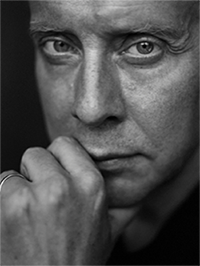
He will present a lecture titled "Vinyl streaming and the Groupe de Récherches Musicale (GRM)".
Ragnar Grippe has composed electronic music since 1973. Commissions from la Scala in Milan to film music, modern dance. His first vinyl record was released on the Shandar label in Paris (which also published Terry Riley, Philip Glass, La Monte Young, Steve Reich). This year 2019 DAIS Records in New York has released his modern dance piece Symphonic Songs - on vinyl. Grippe has lived in Paris where he studied at the GRM and with Luc Ferrari. He currently resides in Sweden. Last year Grippe collaborated with lighting designer Tobias Rylander to present Lumière Étrange at the Gagnef Festival in Sweden. Sponsored by the Swedish Arts Grants Committee.
Speakers: LoVid (Tali Hinkis and Kyle Lapidus)
Time: Monday, April 22nd 2019, 1pm.
Location: Elings Hall, room 1601.

LoVid will discuss their process of working with handmade analog audiovisual synthesizers and producing textile and other tactile objects based on their media works. The presentation will include images, videos, and a conversation on DIY culture.
LoVid (Tali Hinkis and Kyle Lapidus), have been collaborating since 2001. LoVid's practice includes immersive multimedia performances and installations, textile works, participatory projects, and videos. Their projects have been exhibited at Real Art Ways (CT), Moving Image Art Fair (NY), Daejeon Museum (Korea), Everson Museum (NY), Smack Mellon (NY), CAM Raleigh (NC), Netherland Media Art Institute (Netherlands), The Jewish Museum (NY), The Neuberger Museum (NY), The New Museum (NY), and ICA (London), among many others. LoVid has performed and presented works at: Issue Project Room (NY), Museum of Moving Image (NY), Lampo (Chicago), International Film Festival Rotterdam (Netherlands), MoMA (NY), PS1 (NY), River to River Festival (NY), The Kitchen (NY), and FACT (Liverpool) among many others. LoVid’s projects have received support, awards, grants, and residencies from organizations including: NY Hall of Science, The Robert Rauschenberg Foundation, Cue Art Foundation, Eyebeam, Harvestworks, Wave Farm, Rhizome, Franklin Furnace, NYFA, LMCC, NYSCA, and Greenwall Foundation.
For more information about the MAT Seminar Series, go to: seminar.mat.ucsb.edu.
Date: Friday April 19th 2019
Time: 12:30pm
Location: Studio Xenakis (room 2215) Music Building
Why, in this digital age, perform on analog technology from the 1970’s? Why improvise when there is so much great electronic and digital tools available? Why do I always say, "you’re only as expressive as your control voltages." What does, "do the opposite" mean in my world? A free-wheeling talk about my compositional and performance process.
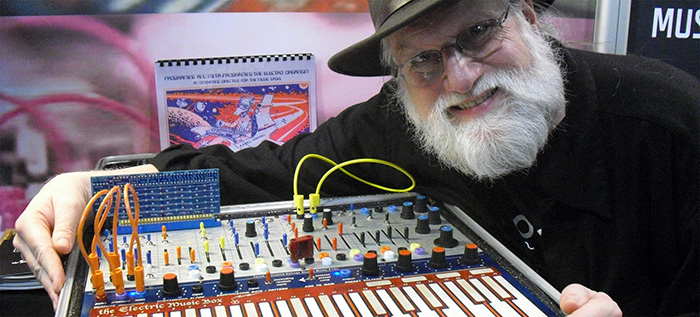
Date: Thursday April 18th 2019
Time: 8pm
Location: Lotte Lehman concert hall
The concert will feature the CREATE Ensemble, three works by UCSB students, and a solo performance by our featured guest, Oregon composer and Buchla synthesis maven Todd Barton. Mr. Barton will perform on a Buchla Music Easel, no digital electronics involved. The concert will be spatialized in eight channels. Free event.
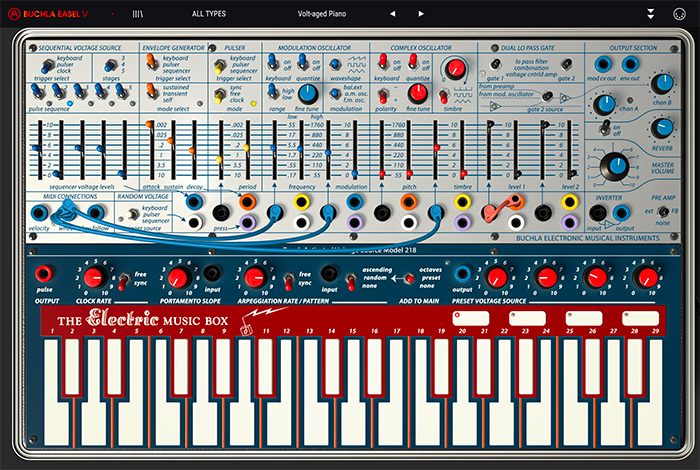
Speaker: David Familian.
Time: Monday, April 8th 2019, 1pm.
Location: Elings Hall, room 1601.

Photo credit: museumofnonvisibleart.com/interviews/david-familian
David Familian, Artistic Director of the Beall Center for Art + Technology for the past 11 years, will present a lecture about the curatorial program he has developed at the Beall. He will focus on his approach to organizing group exhibitions as well as the Black Box Project Artists’ Residency program. Additionally, he will discuss the exhibition, Drawn from a Score, featuring artists whose work ranges from analogue to code-based scores.
David Familian is the Artistic Director of the Beall Center for Art and Technology at University of California Irvine. He started working at the Beall in 2005 where he has curated one-person exhibitions of artists Shih Chieh Huang, Golan Levin, Rafael Lozano-Hemmer, Chico MacMurtrie, Jennifer and Kevin McCoy, Nam June Paik, Eddo Stern, Victoria Vesna and Zimon. He has also curated group exhibitions such as: Grand Text Auto, exploring new forms of gaming and narratives; DataVIz, data visualizations made by artists across media; Live, works that employed live, real-time data; Play in Three Acts, a trio of interactive installations and Sight and Sound, sound art projects ranging from noise to music.
An artist and educator, Familian received his BFA from California Institute of the Arts (1979) and his MFA from UCLA (1986). For twenty-five years he taught studio art and critical theory in art schools and universities including Otis College of Art and Design, Minneapolis College of Art and Design, Santa Clara University, San Francisco Art Institute and UC Irvine.
Although Familian started his career as a photographer, since 1990 new media has become integral to his own artistic practice. In 2013 he premiered Echo and Narcissus a new sound video installation with interactive elements at the Art/Sci Gallery at UCLA.
In 2012 Familian initiated Black Box Projects, in which artists are invited to do residences with scientists in areas such as cognitive robotics, computational genetics, biology and information science. The first exhibition in 2013 was Paul Vanouse’s Evidence, which utilized light boxes, live biological experiments, electrophoresis gels, and interactive performers in the gallery to reveal varying aspects of DNA. The next project was in 2016, Wetware: Art | Agency | Animation a group exhibition of artists that create works in the emerging field of BioArt. This exhibition also included 2 residences that produced work for the exhibition.
For more information about the MAT Seminar Series, go to: seminar.mat.ucsb.edu.
Speaker: Jake Abbott, University of Utah.
Time: Monday, April 1st 2019, at 3:30pm.
Location: Elings Hall, room 1601.
Microscale and mesoscale robotic devices that navigate the natural pathways of the human body have the potential to push minimally invasive medicine toward becoming truly noninvasive. Because of the small size of these devices, carrying power and actuation sources onboard is extremely challenging. Consequently, there is a great deal of interest in the area of magnetic manipulation, such that the system’s primary source of actuation and intelligence can be located outside of the patient’s body. In this talk, I will discuss a number of research projects that I have been involved with over the past decade exploring methods to use magnetic fields for future minimally invasive medical robotic systems. Topics will include microrobots for retinal drug deliver, microrobots that swim like bacteria, magnetic screws that can drill through soft tissue, a magnetically guided cochlear implant, and an actively controlled capsule endoscope for inspection of the gastrointestinal tract. Systems have utilized both electromagnets and permanent magnets.
Dr. Jake Abbott is an Associate Professor in the Department of Mechanical Engineering at the University of Utah. He is the head of the Telerobotics Lab, where his research involves medical and microscale telerobotic systems, with a primary focus on the use of magnetic fields for manipulation. His research was been supported by the NSF, NIH, NASA, and industry. Previously, he was a postdoctoral research associate in the Institute of Robotics and Intelligent Systems at ETH Zurich in Switzerland. He received a B.S. degree at Utah State University, an M.S. degree at the University of Utah, and a Ph.D. degree at Johns Hopkins University, all in mechanical engineering. Dr. Abbott is a recipient of the NSF CAREER Award, the Best Manipulation Paper award at the 2010 IEEE International Conference on Robotics and Automation, the Best Poster award at the 2013 Hamlyn Symposium on Medical Robotics, the Best Paper Award at the 2014 IEEE Haptics Symposium, and the Best Paper Award in Medical Robotics at the 2017 IEEE International Conference on Robotics and Automation. Dr. Abbott is an Associate Editor for the IEEE Transactions on Robotics and the International Journal of Robotics Research.
For more information about the MAT Seminar Series, go to: seminar.mat.ucsb.edu.
Date: Monday, March 18th, 2019.
Time: 9am
Location: Elings Hall room 2611, Experimental Visualization Lab.
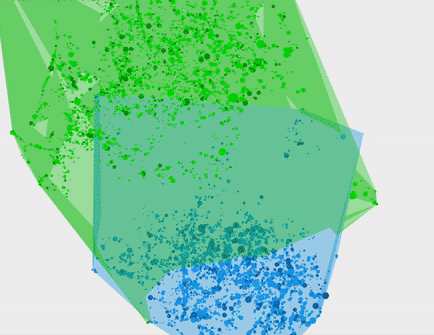
Abstract:
Naming a movie requires deliberation because the title of a film plays a significant role in attracting audiences at first glance. The title can be a question for the film to answer: What Ever Happened to Baby Jane? (Robert Aldrich, 1962); a plot summary: Alice Doesn't Live Here Anymore (Martin Scorsese, 1974); or reflections of characters’ feelings: Shame (Steve McQueen, 2011). Every single word in a title matters, even the usage of a symbol needs careful consideration.
However, few projects have conducted information visualizations in analyzing the titles of films to explore patterns and trends in terms of naming them. Puzzle of Naming is an interactive data visualization aims to explore the hidden mechanism forming the titles, especially in the context of releasing time and relevant topics. The primary analysis approach is to investigate every word in the titles via various NLP (Natural Language Processing) methods, such as Latent Dirichlet Allocation, and Doc2vec. All extracted information of the headings, such as length, part of speech, and semantics, are converted into visual representations. The final deliverable is an interactive 3D data visualization with a user interface for interaction developed in Processing.
Speaker: Skye Morét.
Time: Friday, March 15th 2019, at noon.
Location: Elings Hall, room 2611 (Experimental Visualization Lab).

How do we explore new and creative ways of portraying complex marine ecosystems, particularly regarding places that most people will never see? In an effort to engage a broad audience with this theme and create energy and synergy in fields beyond the Antarctic context, I exploited opportunities inherent in visual information design: color, contrast, and motion. Here, I explain how, within the framework of Antarctic environmental studies, information design can be used for facilitating conversation and participation, geographical and disciplinary place-making, and as a means of visual storytelling. We now have the opportunity, in a tech-advancing 21st century, to engage in a more pragmatic approach to Antarctic knowledge dissemination—one that sees the value of contextualizing the Antarctic experience through the lens of human engagement both on and off the continent. New modes of Antarctic dialogue and experiential media, particularly those that harness data-driven design and storytelling, will only increase in scientific, cultural, and political value within the context of rising socio-environmental concerns about polar regions.
Skye Morét is a data-driven designer and marine scientist. Her diverse background on the ocean—having sailed 80,000+ miles around the globe—fuels her belief in the power of art and design in communicating nature and science. Her work investigates the complex relationship between nature and technology-mediated human expectations, experiences, and engagement. Skye is an Assistant Professor in the Collaborative Design + Design Systems graduate program at the Pacific Northwest College of Art and is a Senior Researcher on the Ocean Archive Project with User Group Coop. Her work has been published in Science, Slate, Migrant Journal, Popular Science, Roads & Kingdoms, and Public Radio International, among others.
For more information about the MAT Seminar Series, go to: seminar.mat.ucsb.edu.
Speaker: Özge Samanci.
Time: Monday, March 11th 2019, at 1pm.
Location: Elings Hall, room 1601.

Humanity's relationship with the natural world is multifaceted. Due in part to our sensory system, we perceive an illusionary boundary between our bodies and the rest of the world. While we are an extension of the universe, we are destroying the eco with our ego. For example, humans forget that we evolved from the oceans and now we are destroying the source of our origins. Our human impact is collective and massive, leading to narrations of environmental cataclysm and points-of-no-return. These repeated environmental narrations are turning into clichés. We are developing a resistance to hearing the core of the problem. Can media art help to overcome this collective immunity? In this talk, I will explore some of my interactive installations made to internalize Donna Haraway’s theory: humans are not superior to any ecosystem and they exist in the intertwined web of all ecosystems as an extension of the planet.
Özge Samanci, a media artist and graphic novelist, is an associate professor in Northwestern University’s School of Communication. Her interactive installations have been exhibited internationally. In her art works she merges the procedural power of computer code with comics, animation, interactive narrations, sculpture, projection art and performance. Her work motivates awareness on rather gloomy subjects such as the collapsing balance between nature and culture and the impact of ego. Her autobiographical graphic novel Dare to Disappoint (Farrar Straus Giroux, 2015) has been translated into five languages and was positively reviewed in The New York Times, The Guardian, Slate and others.
For more information about the MAT Seminar Series, go to: seminar.mat.ucsb.edu.
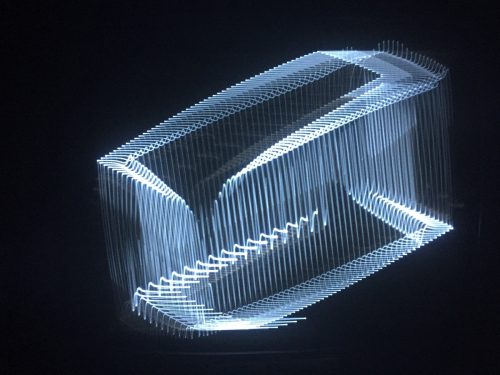
Video by Doc North
The VECTOR HACK Jam provided a showcase for a series of sketches made by UCSB Media Arts and Technology and other students and participants during a two week long workshop, sponsored by the Media Arts and Technology Program and the Systemics Public Programming Initiative, with sound+light artist Derek Holzer.
Participants explored the use of Pure Data and other digital platforms to generate responsive and interactive audio signals which also form an image when used to control the horizontal and vertical movements of a beam of light in either an oscilloscope or a laser display. The works they created probe both the synesthetic experience as well as the medium-specific idiosyncrasies of the devices they utilize.
VECTOR SYNTHESIS is an audiovisual, computational art project using sound synthesis and vector graphics display techniques to investigate the direct relationship between sound+image. It draws inspiration from media archaeology and obsolete technologies such as the Cathode Ray Tube monitor, combined with contemporary laser display techniques. Audio waveforms control the vertical and horizontal movements as well as the brightness of a single beam of light. What is seen and heard are both an expression of the same electronic signal.
Derek Holzer (USA 1972) is a sound+light artist based in Helsinki & Berlin, whose current interests include DIY electronics, audiovisual instrument building, the relationship between sound and space, media archaeology, and participatory art forms. He has performed live, taught workshops and created scores of unique instruments and installations since 2002 across Europe, North and South America, and New Zealand.
Santa Barbara Center for Art, Science and Technology (SBCAST): sbcast.org
Speaker: Adam Kearney.
Time: Monday, March 4th 2019, at 1pm.
Location: Elings Hall, room 1601.

The talk will explore how to find ideas - an intersection of entrepreneurship, art, and research.
Adam Kearney is currently a Knowledge Engineer at Amazon working on Alexa. Formerly, he was the Founder and CEO of Propsboard, which helped companies broadcast employee recognition to their office TVs. Before that, he was the Founder and CEO of The Connectome - a music intelligence platform with over 15,000 musicologists contributing data. The Connectome was acquired in October 2015.
Adam was on the leadership board of Philly Startup Leaders where he co-founded a Startup Bootcamp, as well as the PSL Accelerator. He also serves on the board of The Hannah Arendt Center for Politics and Humanities at Bard College.
For more information about the MAT Seminar Series, go to: seminar.mat.ucsb.edu.
Time: Monday March 4, 2019 at 5pm.
Location: Studio Xenakis (room 2215) Music Building.
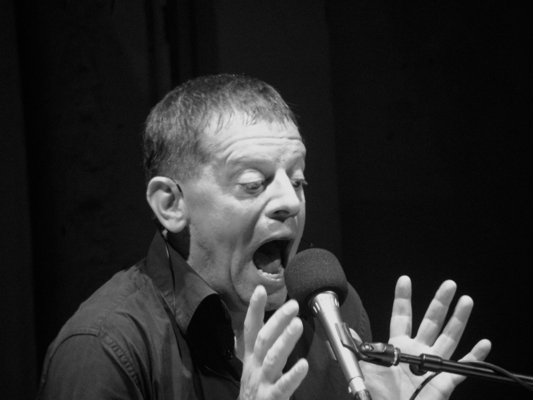
Nicholas Isherwood has sung in the world's leading festivals (Salzburg, Aix, Festival d'Automne, Avignon, Almeida, Biennale di Venezia, Holland Festival, Munich Biennale, Wien Modern, Händel Festivals in Göttingen and Halle, Tanglewood, Ravinia, etc.) and opera houses (Royal Opera House, Berlin, Frankfurt, Stuttgart, Amsterdam, Lyon, Châtelet, Théatre des Champs Elysées, Rome, Torino, Genova, La Fenice, La Scala, etc.), working with conductors such as Joel Cohen, William Christie, Peter Eötvös, Gabriele Ferro, Nicholas McGegan, Paul McCreesh, Zubin Mehta, Kent Nagano, Helmuth Rilling, David Robertson, Gennadi Rozhdestvensky and Arturo Tamayo.
Isherwood has worked closely with composers such as Sylvano Bussotti, Elliott Carter, George Crumb. Hans Werner Henze, Mauricio Kagel, György Kurtág, Steve Lacy, Olivier Messiaen, Giacinto Scelsi and Iannis Xenakis.
Isherwood collaborated with Karlheinz Stockhausen for 23 years, singing numerous world premieres. He has improvised with Steve Lacy, Joelle Léandre, David Moss and Sainkho Namtchilak. He has made 55 compact discs for labels such as Erato and Harmonia Mundi and has appeared in three films for television.
An active pedagogue, he has taught master classes at schools such as the Paris Conservatoire, Musikhochschule Köln, Salzburg Mozarteum and Conservatorio Giuseppe Verdi and held positions at SUNY Buffalo, Notre Dame, Calarts and the Ecole Normale de Musique. His book Techniques of Singing, was published by Bärenreiter Verlag.
Speaker: Derek Holzer.
Time: Monday, February 25th 2019, at 1pm.
Location: Elings Hall, room 1601.

The development of any kind of media technology combines utopian and dystopian tendencies, and nowhere is that more true than in the development of computer vector graphics. Taking the activation of the AN/FSQ-7 computers at the heart of the SAGE (Semi-Automatic Ground Environment) defense stations in the United States in 1958 as its starting point, this talk explores the military/scientific legacy at the heart of modern computing and attempts by artists of the 50’s, 60’s, and 70’s to decouple these tools from their destructive origins.
Derek Holzer (USA 1972) is a sound+light artist based in Helsinki & Berlin, whose current interests include DIY electronics, audiovisual instrument building, the relationship between sound and space, media archaeology, and participatory art forms. He has performed live, taught workshops and created scores of unique instruments and installations since 2002 across Europe, North and South America, and New Zealand.
For more information about the MAT Seminar Series, go to: seminar.mat.ucsb.edu.
Speakers: Christa Sommerer and Laurent Mignonneau.
Time: Tuesday, February 12th 2019, at 6pm.
Location: Engineering Science Building, room 2001.

Artists and designers in the area of interactive art have been conducting artistic research in human-machine interaction for a number of years now. Interaction and interface design have not only had their roots in human computer engineering but have also seen parallel developments in media art. It is interesting to see where early notions of interactivity and user participation came from and how artists over the past 40 or more years have already looked at the merits of audience involvement in their artistic work. In this lecture artistic and social notions of interactivity will be addressed and specific examples of the artistic works by Sommerer and Mignonneau as well as the Interface Cultures Department at the University of Art in Linz will be presented.
Christa Sommerer and Laurent Mignonneau are internationally renowned media artist, researcher and pioneer of interactive art. After working, researching and teaching in the US and Japan for 10 years, they set up the department for Interface Cultures at the University of Art and Design in Linz, Austria. Sommerer is also currently also a Visiting Professor at CAFA Central Academy of Fines Arts Bejing, she was an Obel Guest Professor at Aalborg University in Denmark, and a Visiting Professor at Tsukuba University Department of Empowerment Informatics in Japan.
Laurent Mignoneau was also Chaire International Guest Professor at the Université Paris 8 in Paris, France. Sommerer and Mignonneau created around 30 interactive artworks, which have been shown in around 300 international exhibitions. They have received numerous awards: the BEEP Award at ARCO Art Fair in Madrid in 2016, the 2012 Wu Guanzhong Art and Science Innovation Prize which was bestowed by the Ministry of Culture of the People’s Republic of China; the 1994 Golden Nica Prix Ars Electronica, among others.
For more information about the MAT Seminar Series, go to: seminar.mat.ucsb.edu.
Speaker: Dr. Barbara Imhof
Time: Monday, February 11th 2019, at 1pm.
Location: Elings Hall, room 1601.

The talk will explore the implications of space as an environment for future habitation both materially and conceptually. Research and development projects of LIQUIFER - implemented as part of the European space exploration programme - highlight topics of living with limited resources, in limited spaces and living self-sufficiently. The basis of LIQUIFER’s work constitute concept studies for lunar and Martian bases as well as building prototypes set within future scenarios for living on earth and in space. Arts-based and basic research in the fields of biomimetics and integrating biological systems into architecture add to the circular systems perspective of future narratives for our extended world.
Barbara Imhof is a space architect, researcher and educator. She is also the co-founder and co-manager of LIQUIFER Systems Group that comprises experts from the fields of architecture, design, human factors, systems engineering and science. Their space related projects focus on feasibility and scenario studies as well as designing and building mock-ups and prototypes. LIQUIFER partners with renowned research institutions and well-known enterprises to conduct research and technology development through contracts with the European Space Agency, the space industry and with the EU-Framework Programmes and other funding bodies.
As project lead Barbara currently works on the Gateway project, designing the habitat module for the next International Space Station in a lunar orbit. She also led projects such as SHEE, a Self-deployable Habitat for Extreme Environments, the first built European simulation habitat. The SHEE habitat became part of another LIQUIFER project named MOONWALK, developed to test human-robot collaborations in two space simulation missions in Rio Tinto and subsea. In addition, Barbara pursues projects in the field of biomimetics and losed-loop systems such as Living Architecture - in collaboration with Rachel Armstrong - and GrAB–Growing As Building which looks at growth principles in nature and their proto-architectural translations towards self-growing buildings.
For more information about the MAT Seminar Series, go to: seminar.mat.ucsb.edu.
Presentation title: How do we listen? A look into the world of 3D audio.
Summary: Just like we look at objects in 3D in daily life, we also listen to sounds in 3D. Listening in 3D helps us accurately locate where sounds are coming from. Accurate reproduction of this over loudspeakers and headphones makes our listening experience more realistic and immersive. In this talk, I will give a brief overview on how we listen. I will also give a brief history of the field, current research that is being carried out and a look into the future. Lastly, the talk will include a listening demo in an 8.0 configuration.
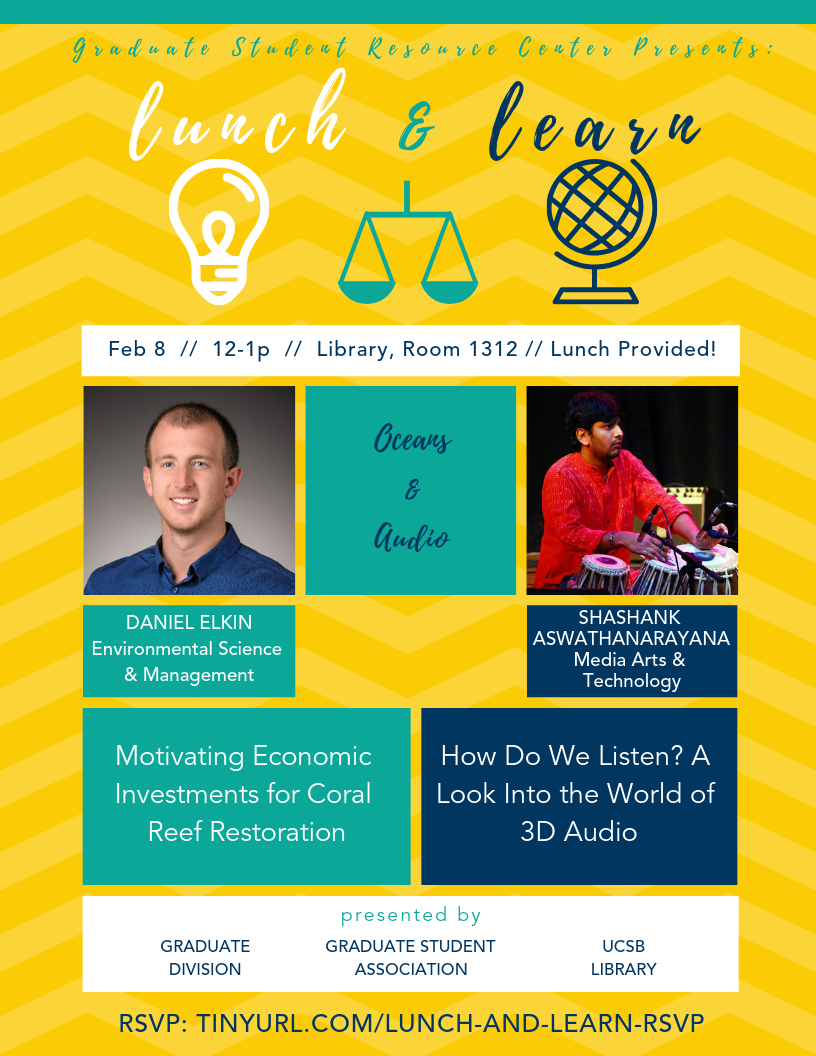
Seeking to explore and illustrate how the innovative works of women in media arts, science and technology influence the community, the UC Santa Barbara-based Alliance of Women in Media Arts and Technology (AWMAT) will hold its second annual conference.
AWMAT 2019: Impact! will take place Feb. 7–9 in multiple venues across the campus, featuring dozens of talks, presentations, workshops and performances — many of which are free and open to the public — by women technologists, engineers, artists and musicians. Emphasizing how emerging art forms work in conjunction with technology to shape culture, artistic representation in multimedia will be highlighted through interactive installations, virtual reality and sonic arts.
Keynote speakers are Branda Miller, media artist and educator, and Pamela Z, media artist, composer, performer.
For more information about the event, visit: awmat2019.wordpress.com.
UCSB News: www.news.ucsb.edu/2019/019336/influential-women.
Time: February 8th, 2019, at 8pm
Location: Room 1145, Music Building.
Pamela Z is a composer/performer and media artist who works primarily with voice, live electronic processing, sampled sound, and video. A pioneer of live digital looping techniques, she processes her voice in real time to create dense, complex sonic layers. Her solo works combine experimental extended vocal techniques, operatic bel canto, found objects, text, digital processing, and wireless MIDI controllers that allow her to manipulate sound with physical gestures.
In addition to her solo work, she has been commissioned to compose scores for dance, theatre, film, and chamber ensembles including Kronos Quartet, the Bang on a Can All Stars, Ethel, and San Francisco Contemporary Music Players. Her interdisciplinary performance works have been presented at venues including The Kitchen (NY), Yerba Buena Center for the Arts (SF), REDCAT (LA), and MCA (Chicago), and her installations have been presented at such exhibition spaces as the Whitney (NY), the Diözesanmuseum (Cologne), and the Krannert (IL). Pamela Z has toured extensively throughout the US, Europe, and Japan. She has performed in numerous festivals including Bang on a Can at Lincoln Center (New York), Interlink (Japan), Other Minds (San Francisco), La Biennale di Venezia (Italy), Dak’Art (Sénégal) and Pina Bausch Tanztheater Festival (Wuppertal, Germany). She is the recipient of numerous awards including a Robert Rauschenberg Foundation residency, a Guggenheim Fellowship, the Doris Duke Artist Impact Award, Herb Alpert Award in the Arts, an Ars Electronica honorable mention, and the NEA Japan/US Friendship Commission Fellowship. She holds a music degree from the University of Colorado, Boulder.
Admission: General $15, Students w/ID $7
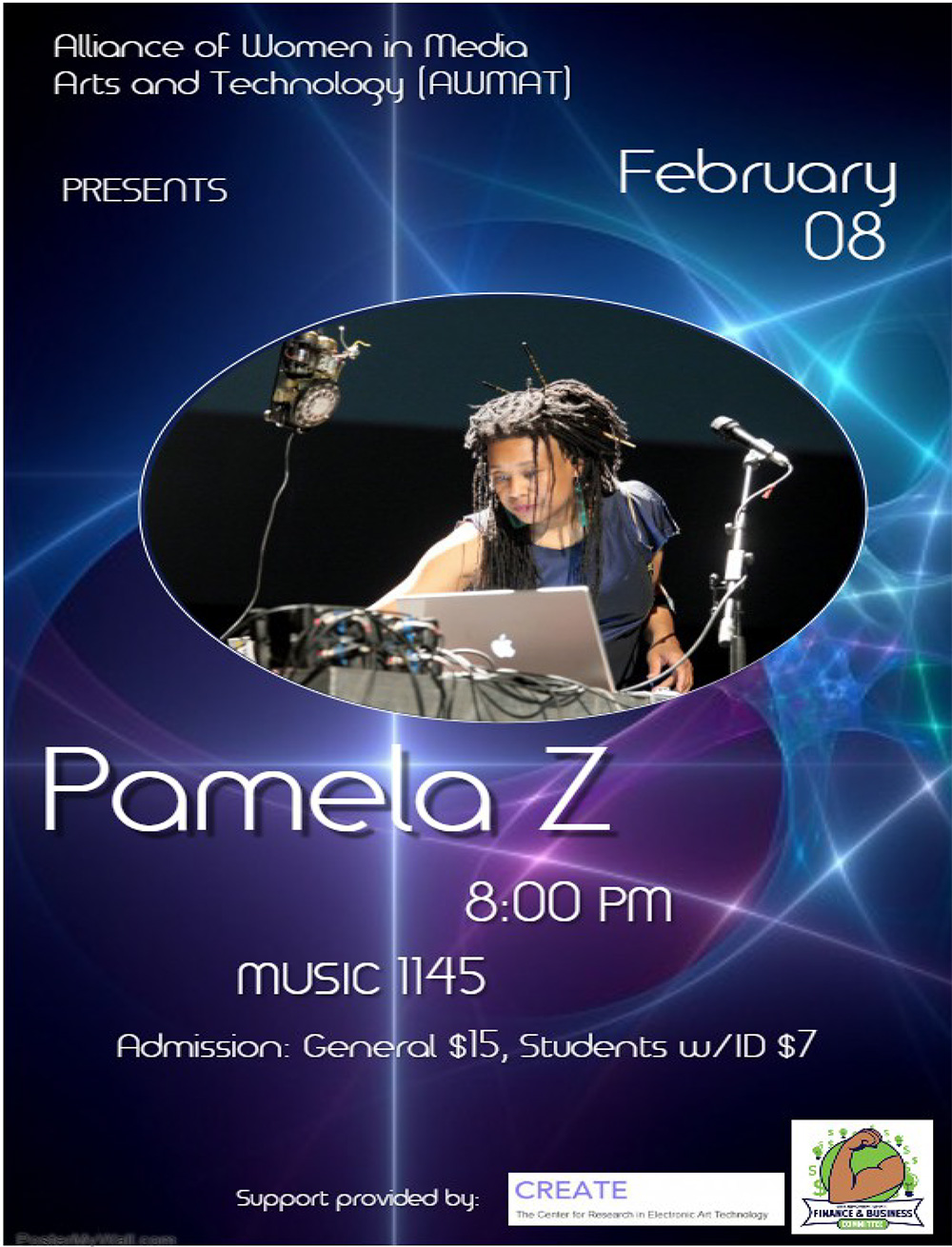
Time: Wednesday, February 6th 2019, at 7pm.
Location: Lotte Lehman Concert Hall.
The central theme of Forbidden Planet is the impact of artificial intelligence (AI) on civilizations. Forbidden Planet was the first science fiction film to depict humans traveling in a faster-than-light starship of their own creation. It was also the first to be set entirely on another planet. The Robby the Robot character is an integral supporting character in the film. The robot could analyze any substance and re-synthesize it.
Most importantly, Forbidden Planet was groundbreaking as the first film of any genre to use an entirely electronic musical soundtrack, composed by Bebe and Louis Barron.
Bebe Barron was invited to UCSB in 2000 to realize her final work, Mixed Emotions, using the Creatovox granular synthesizer developed by Professor Curtis Roads and Alberto De Campo, CREATE Research Director.
This showing is dedicated to her memory.
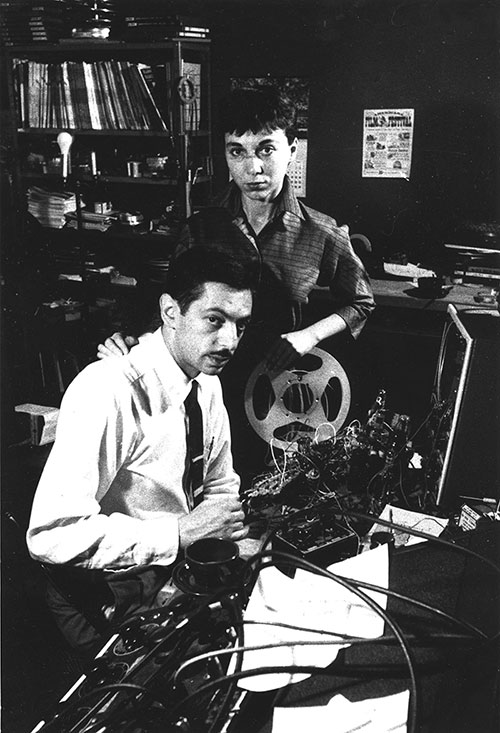
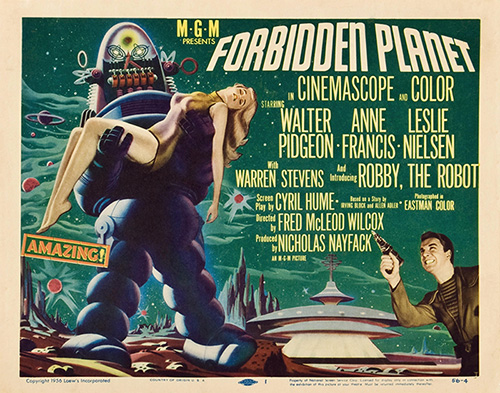
Time: Monday, February 4th 2019, at 1pm.
Location: Elings Hall, room 1601.

Round table participants:
Moderator: Marko Peljhan, Chair and Professor, MAT.
For more information about the MAT Seminar Series, go to: seminar.mat.ucsb.edu.
Speaker: David Bowen
Time: Monday, January 28th 2019, at 1pm.
Location: Elings Hall, room 1601.

Using intersections between natural and mechanical systems, David Bowen produces unique relationships within his sculpture and installation. With robotics, custom software, sensors, tele-presence and data, he constructs devices and situations that are set in motion to interface with the physical and virtual world. The devices he constructs often play both the roles of observer and creator, providing limited and mechanical perspectives of dynamic situations and living systems. These devices and situations create a dissonance that leads to an incalculable changeable situation resulting in unpredictable outcomes. The phenomenological outputs are collaborations between the natural form or function, the mechanism and the artist.
David Bowen is a studio artist and educator whose work has been featured in numerous group and solo exhibitions nationally and internationally. Bowen’s work consists of interactive, reactive and generative processes that emerge from intersections between natural and mechanical systems. He is currently an Associate Professor of Sculpture and Physical Computing at the University of Minnesota.
For more information about the MAT Seminar Series, go to: seminar.mat.ucsb.edu.